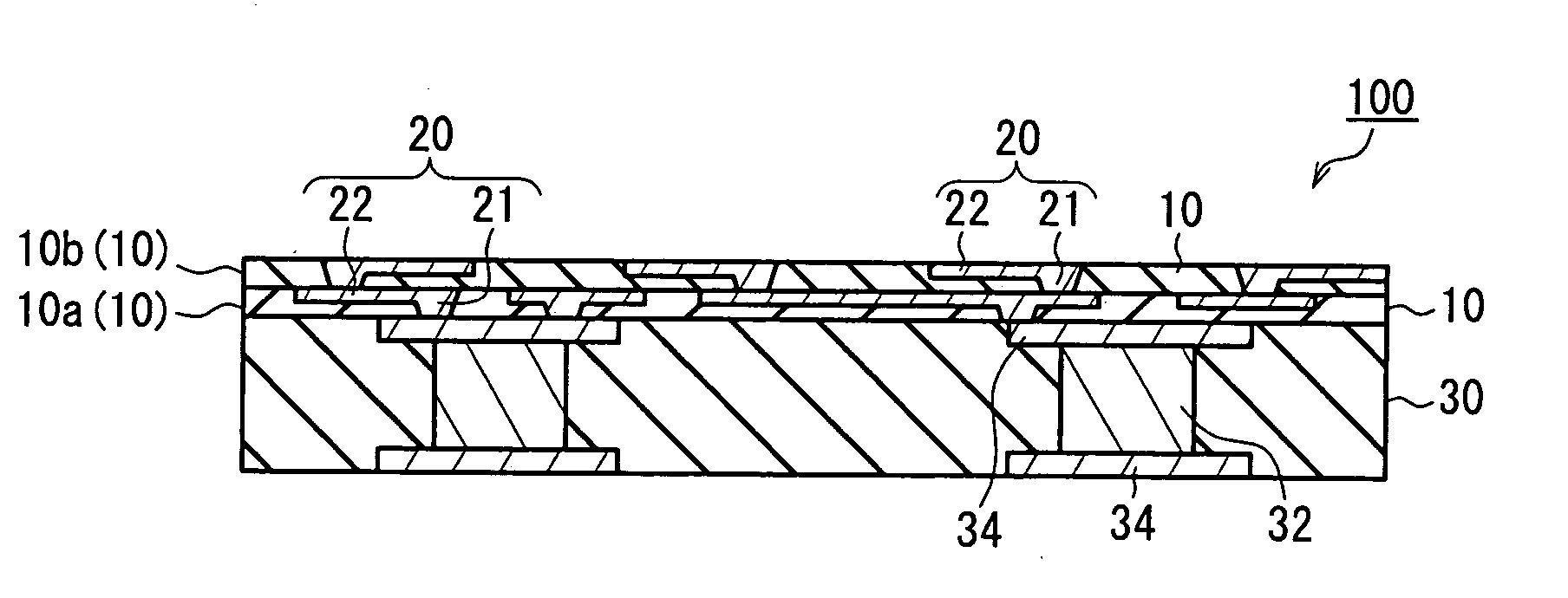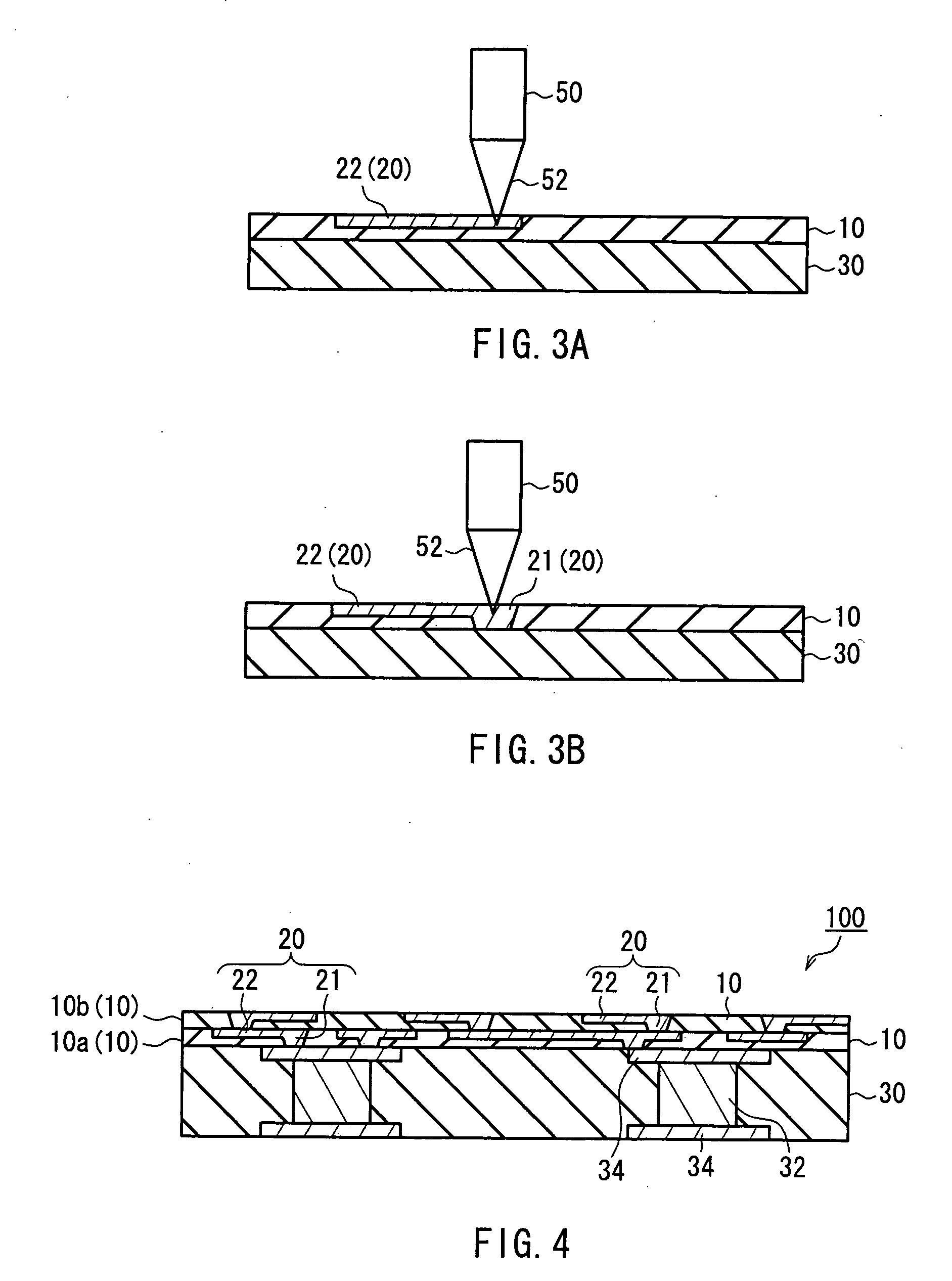Circuit board and method for manufacturing the same
a technology of circuit boards and manufacturing methods, applied in the field of circuit boards, can solve the problems of increasing the minuteness of printed boards (circuit boards), increasing the cost of materials, and increasing the cost of manufacturing costs including installation costs and material costs
- Summary
- Abstract
- Description
- Claims
- Application Information
AI Technical Summary
Benefits of technology
Problems solved by technology
Method used
Image
Examples
Embodiment Construction
[0056] With the present invention, a conductive path is formed by irradiating laser light onto a phase change layer using phase change in a phase change layer formed from a phase change material that is capable of changing alternately between an electrically insulating state and an electrically conductive state, and therefore very small-dimension minute vias and conductors can be formed. Furthermore, the phase change of a chalcogenide semiconductor according to the present invention is reversible, and therefore subsequent repair, rework, or trimming also is easy. As a result, production yields can be improved.
[0057] A circuit board according to the present invention can be used singly by itself and also can be used formed on a substrate. When used singly by itself, it is first constructed on a temporary substrate then transferred to a final substrate.
[0058] In a preferred embodiment of the present invention, the conductive path is at least one of a via and a conductor, and the pha...
PUM
| Property | Measurement | Unit |
|---|---|---|
| electrical conductivity | aaaaa | aaaaa |
| electrical conductivity | aaaaa | aaaaa |
| resistance | aaaaa | aaaaa |
Abstract
Description
Claims
Application Information
 Login to View More
Login to View More - R&D
- Intellectual Property
- Life Sciences
- Materials
- Tech Scout
- Unparalleled Data Quality
- Higher Quality Content
- 60% Fewer Hallucinations
Browse by: Latest US Patents, China's latest patents, Technical Efficacy Thesaurus, Application Domain, Technology Topic, Popular Technical Reports.
© 2025 PatSnap. All rights reserved.Legal|Privacy policy|Modern Slavery Act Transparency Statement|Sitemap|About US| Contact US: help@patsnap.com



